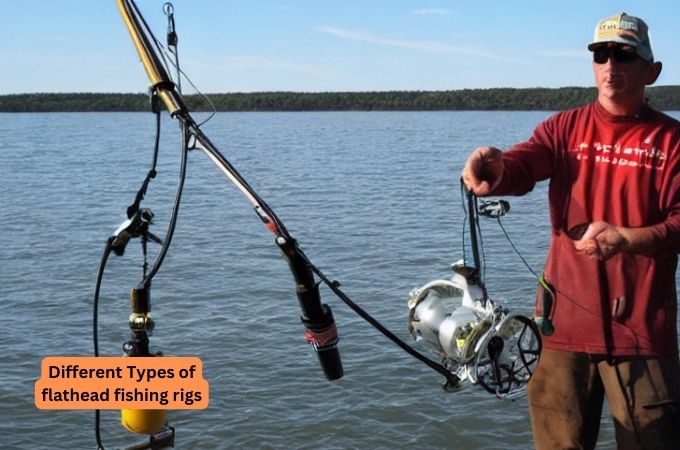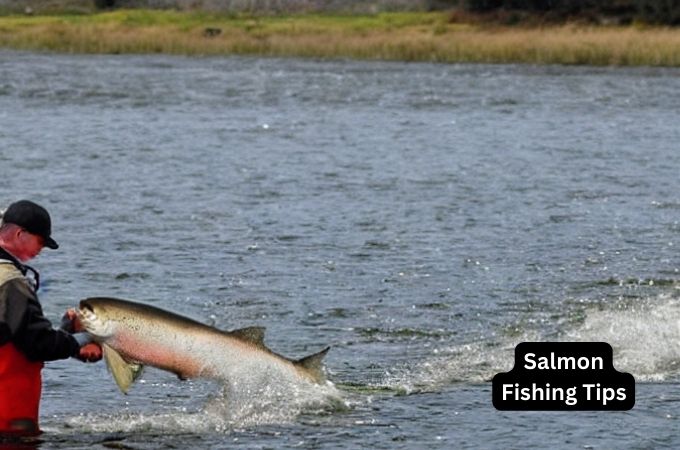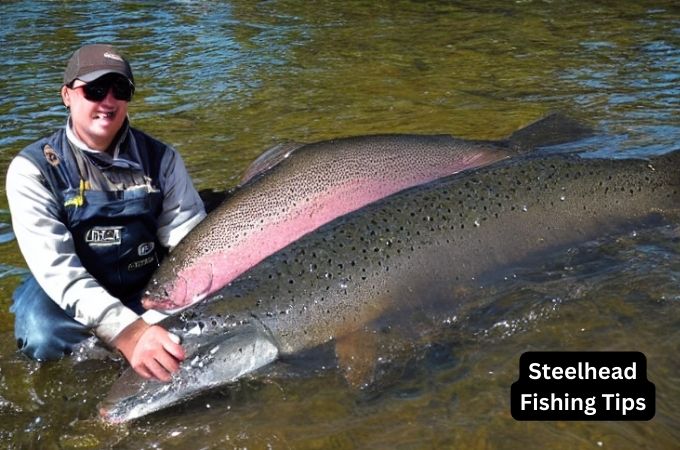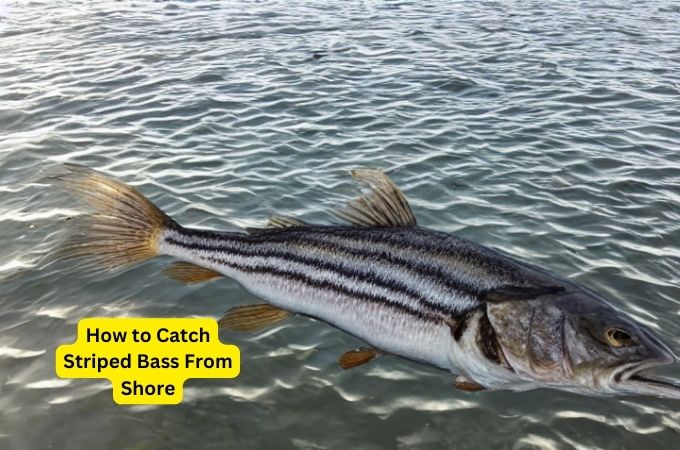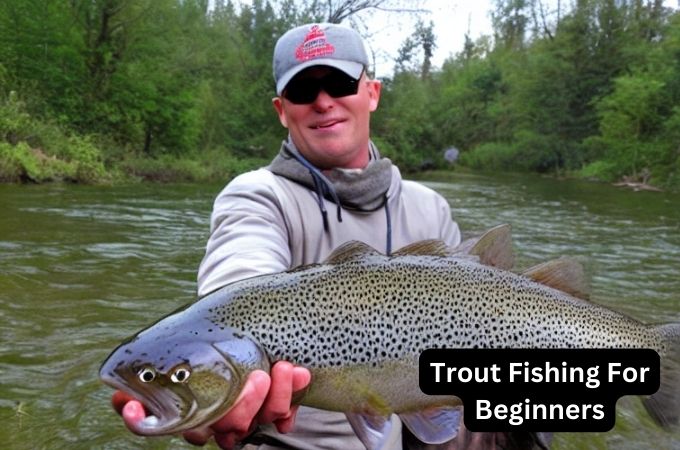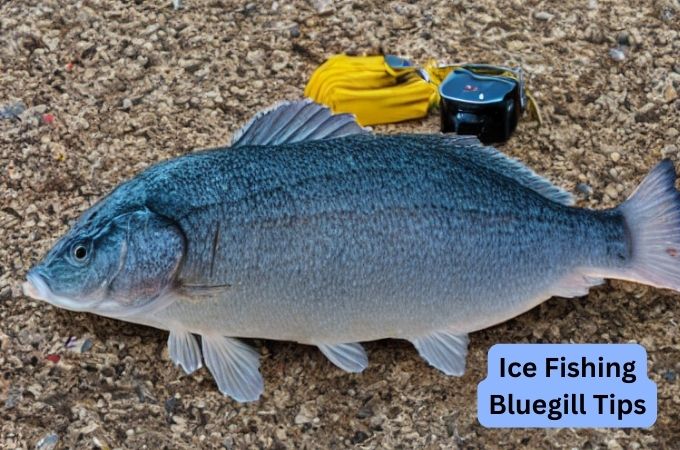How to Catch Tuna | Tuna Fishing Tips & Tricks From Expert
Challenging, exciting, and thrilling, combine these three words, and you will find only a single answer- tuna fishing. Catching these fishes, both bluefin and yellowfin tuna, requires strength, patience, and endurance. Nonetheless, the experience of finding these fantastic fishes live is next to none.
Tuna is an agile and incredibly fast-moving fish; hence, it requires different techniques to catch them. We have been in the ocean catching the giant yellowfin tunas for sometimes now. In our journey to catch the biggest tunas out in the Pacific, we have figured out how to catch Tuna effectively.
Get ready because we are bringing the secret out of our volts.
Breaking Down The Biology of Tuna
While we are concerned about Tuna catching, understanding their biological aspect will come handy. There are no less than 15 species of reportedly. An average tuna fish grows up to 1 meter and 120-150 lbs. However, an adult yellowfin tuna might grow more than 2-3 meters and weighing well-over 300 lbs.
Tuna is famous for its speed in the Atlantic water with an average speed of 50-60 KPH. Their streamlined, agile body enables them to achieve such unthinkable speed. It makes the Tuna catching extremely challenging.
Tuna Fishing Time: Favorable Condition to Catch The Biggest Tuna
Tuna belongs to the pelagic species. It means these are high sea creatures and preys with whimsical attacks. They leave no trail of their arrival and departure. But, there’s a way. We have figured out some favorable timing for fishing tunas.
- After the sunset: Researchers have discovered that yellowfins tuna like to live in the depth of ocean water. But they came out of their den and swim around the surface and mixed layers at night. So, when the light goes out, you will experience the best tuna fishing time.
- Near shrimp boats: It’s a bit tricky. Shrimp boats leave a lot of chum when they process their fishing. This attracts predators like Tuna to have a grand feast. You might take the chance by being on the right spot. Nonetheless, it would be best if you were considerate of the authentic fishermen not to hamper their angling.
- Heatwave: Researches have revealed that yellowfin tuna love water anywhere between 72-82 degrees Fahrenheit. The big tunas, however, like a bit cooler area. Hence, next time you hone for the Tuna, find out the warmer areas on the Atlantic from the SST chart.
- Near reefs: Any angler knows the sheer significance of the reefs, ledges, humps, and seamounts to catch fish. These areas are full of baits and naturally attract predators like Tuna. Do I need to tell you to take advantage of such conditions?
Live Bait Techniques for Tuna Fishing
Tuna is a predator that purely lives on what is found in abundance in different seasons. So, different bait fishes have different effects on the tunas. However, we have accumulated data about the favorite live baits for Tuna and found the following information.
- Blue runners: These are also known as hardtails and are one of the most favorable live baits for tunas. This is because they have a tough shell and found in abundance in all seasons.
- Herring: This is an oily fish and is a popular prey for bigger fishes since it is easily catchable. So, anglers love to use it as live bait in oceans, sea and gulf alike. What’s more, if you are in the gulf regions, you have the luxury to choose between threadfins and menhaden (pogies) that are two different species of herring.
- Mullet: Mullet congregate around the offshore for spawning during a particular period of the year. If you remain at the right spot at the right time, undoubtedly, you will end up catching some of the giant tunas ever. And then, merrily arrange a party at the back of your deck with tuna BBQ.
- Ballyhoo: Although there’s no best alternative to the live baits, what happens if you run out of your live bait stocks? Ballyhoo is your ultimate go for an option at that time. Tunas have an affinity for the Ballyhoo, and you should take advantage of it.
Tuna Fishing Tricks: Things You Should Keep in Mind
The following skills while fishing tuna will come handy for beginners and intermediate fishers.
- Seek Tuna’s attention: It would be great if you put some ‘pieces of stuff’ near your baits to attract the Tuna. Spreaders bars, umbrella rigs, and teaser create a commotion and effectively attract Tuna towards baits.
- Mix your baits: Tuna loves feeding in a wide range of fishes. Hence, it would help if you mixed up your baits to allure them. Tuna is known for its finicky character, and it’s tough to match their hatch. So, try a variety of baits such as spreader bars, squid baits, or single baits. If you see one particular bait is getting attention from the Tuna, immediately switch to it.
- Keep an eye on the spreads: If you go fishing with a team, you should put someone to stand watch the spreads. He can alert his crews whenever he notices a bite. He can also pick the misses. To correct the misses, at first, release the bait to attract the Tuna and then quickly roll it back after a few seconds.
- Use multiple hooks: Tuna is a speedy fish and lurks around different baits. So, we recommend you to use numerous hook-ups. Trolling around different hooks will lure the tune and, consequently, increase the fishing rate significantly.
Tips for Fishing Topwater Tuna
- If you hook the live baits by the nose while drifting, it creates more commotion on the surface water. Thus, you will attract more tunas.
- In oceans and seas, you will see that there are some vertical lines on the surface. Tuna tend to follow these lines; so, put your bait along the vertical lines distinct brakes. These brakes are created by salinity, the difference in water temperature and tide.
- Throw your heavy lures in an underhand technique. It requires less effort than the upper-hand casting.
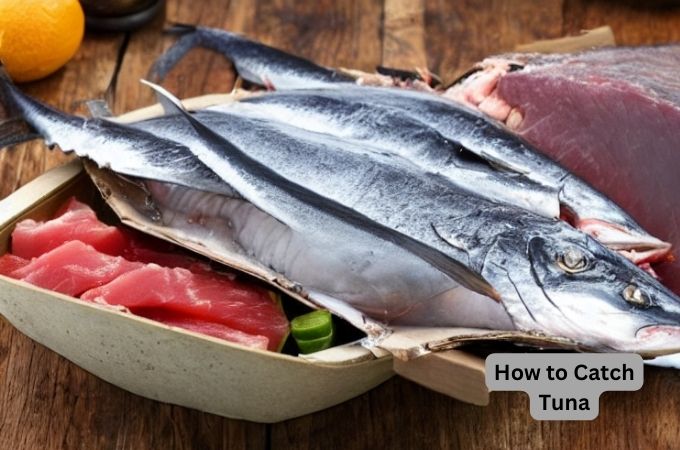
Conclusion:
Now that you know all the tips and techniques of how to catch tuna fish, it’s time to make your favorite recipe with them. I love the tuna fillet served with wasabi and soy. You can give it a try and don’t forget me to thank me when you find it delicious. I will be waiting to see your favorite recipe with the Tuna once you catch a giant one. Happy fishing!
